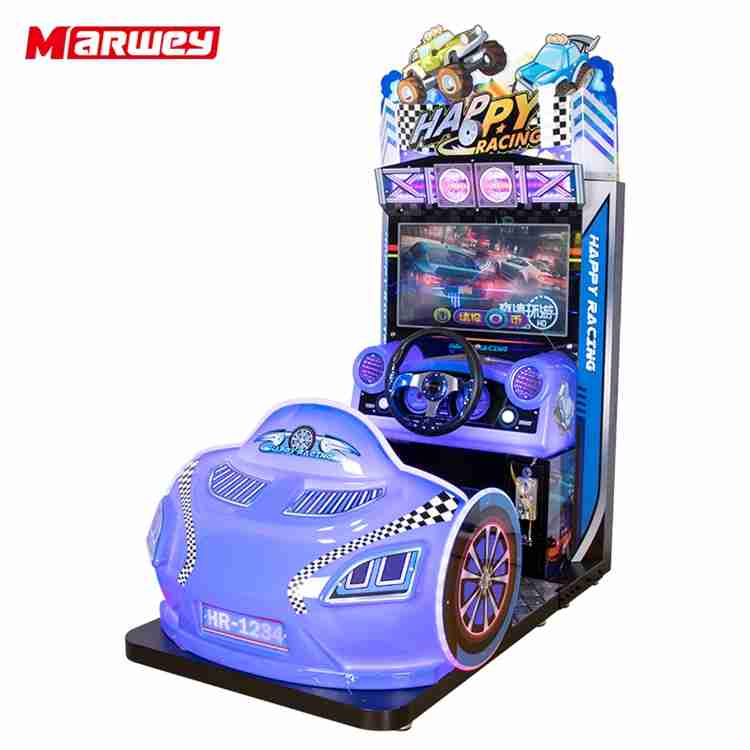Mystery Unveiled: Secrets Behind the Motorcycle Arcade Machine Craze
Running a successful arcade business today demands more than just placing games on the floor. In my 13 years managing over 50 large-scale entertainment venues, I’ve seen firsthand how the rise of immersive experiences like the motorcycle arcade machine has redefined guest engagement and operational strategies. With the arcade industry evolving rapidly—fueled by technological advancements and shifting consumer preferences—understanding the core drivers behind this frenzy can unlock meaningful growth for operators.
Understanding the Popularity of Motorcycle Arcade Machines
The appeal of motorcycle arcade games stems from their immersive, high-adrenaline gameplay that attracts a diverse audience. Titles like Raw Thrills’ MotoGP VR and Sega’s Storm Rider 2 have elevated player expectations by integrating VR and motion-sensing technologies, creating truly engaging experiences. According to Arcade Heroes, these games are not only crowd pullers but gateways to longer player retention times on the floor.
From my operational perspective, introducing a high-quality motorcycle arcade machine increases foot traffic by at least 20-30% in key zones within entertainment centers. Players are drawn to the excitement and the social atmosphere these games foster, sparking spontaneous group play and repeat visits.
Operational Challenges and How to Overcome Them
While lucrative, managing these sophisticated arcade machines presents challenges:
- Maintenance Complexity: VR modules and motion sensors require regular calibration and skilled technicians. Without prompt service, downtime eats into revenue.
- Space Utilization: These machines are larger than conventional cabinets, demanding strategic floor planning.
- Monetization Dynamics: Traditional coin-operated models are waning in effectiveness with modern audiences expecting diverse payment options.
At a premier mall arcade I managed, we addressed these by implementing a dedicated technical shift team for quick machine audits and repairs, reducing average downtime by 40%. Space-wise, conducting a heatmap analysis of traffic patterns helped us optimize the placement of motorcycle machines to maximize visibility and accessibility without congesting walkways.
Innovative Revenue Strategies: From Coins to Subscriptions
The classic coin-drop has given way to smarter monetization. Per recent industry reports by Grand View Research, over 35% of North American arcades have adopted subscription and membership models, with monthly fees ranging from $20 to $50. This transition ensures a stable, predictable cash flow and fosters customer loyalty.
In my experience running a chain of entertainment venues, integrating a membership system with perks such as free rides on marquee games like the motorcycle arcade machine increased average player visit frequency by 50%. Combining this with cashless payments—including NFC and mobile wallet technology—streamlined transactions and boosted per-visit revenue by 15%.
Leveraging Technology for Immersive Management and Player Engagement
Technology integration is no longer optional. Advanced features like cloud gaming, haptic feedback, and augmented reality components enhance gameplay deeply. These also provide operators with real-time performance data, allowing proactive maintenance and dynamic price adjustments based on usage patterns.
One innovative case in my portfolio involved deploying a cloud-connected management dashboard that tracked plays on our motorcycle simulators. This allowed for rapid identification of underperforming units and timely promotional targeting, resulting in a 12% overall revenue uplift within the first quarter.
Recommended Arcade Machine for Enhancing Your Venue
For arcade operators aiming to capitalize on the thrill of racing experiences, I recommend the Car Racing Game Machine Simulator Coin Operated Blue Car Driving Simulator Arcade . This machine features robust metal and plastic construction, efficient 400W power use, and supports multiple indoor entertainment locations including malls and activity centers. Its coin-operated model can readily integrate with modern cashless payment upgrades, offering flexibility in revenue management.
Based on my team’s operational analysis, introducing a simulator of this caliber can generate a 25-35% increase in ancillary spending through cross-selling snacks and merchandise, by keeping players engaged longer and encouraging repeat play. Additionally, its manageable size (1240*840*1760mm) fits well in high-traffic zones without sacrificing floor space efficiency.
Key Takeaways for Operators
| Aspect | Insight | Operational Benefit |
|---|---|---|
| Immersive Gameplay | VR and motion tech elevate player engagement | Higher dwell time and repeat visits |
| Subscription Models | Steady monthly revenue replacing coins | Improved cash flow predictability |
| Maintenance | Regular technical audits reduce downtime | Maximized revenue per machine |
| Payment Systems | Cashless and NFC integration | Simplified transactions, increased spend |
Final Thoughts
The craze for motorcycle arcade machines is more than a fleeting trend — it’s an evolution of how players seek thrilling, immersive experiences combined with seamless convenience. Operators who embrace new technologies, redesign monetization frameworks, and rigorously optimize floor operations position themselves strongly in today’s competitive arcade market.
Through my years of managing venues and studying customer behaviors, I have seen that the success formula closely ties to marrying innovative games with smart, data-driven operational practices. With the right approach, your arcade can become a vibrant hub for excitement and profitability.
Data references sourced from Arcade Heroes, Grand View Research “Amusement Machine Market Size | Industry Report 2030,” and Leon’s “Arcade Games Are Back on the Rise: A Making-Money Project in 2024.”



















MARWEY
MARWEY
MARWEY
MARWEY
MARWEY
MARWEY